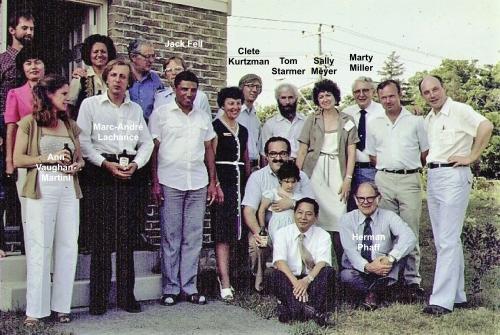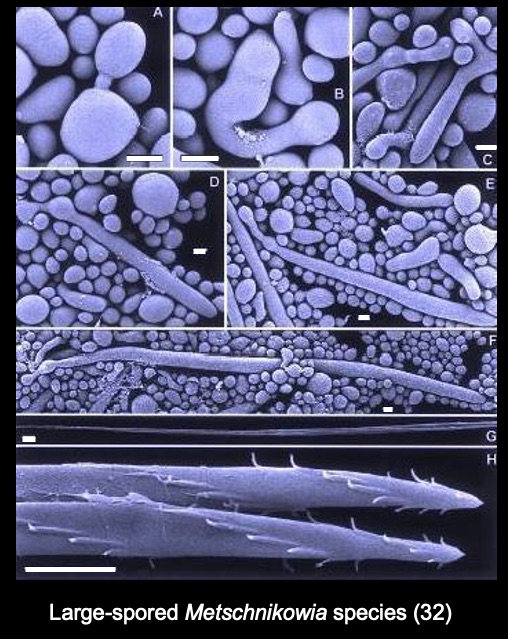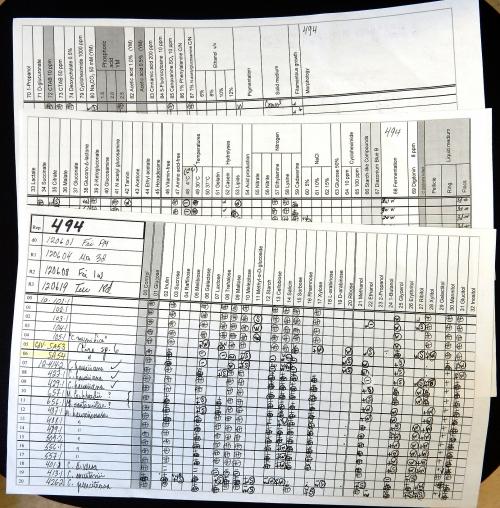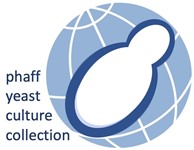NSF Award Press Release
GREAT NEWS: The National Science Foundation is funding the transfer of a collection of 6,000 yeast strains from the University of Western Ontario to UC Davis! This will ensure preservation of this endangered yeast collection, expand the range of yeast species and strains in the Phaff collection catalog, and will make these yeasts and decades of characterization data available to the scientific community for the first time. Expanding the Phaff Yeast Culture Collection from 9,000 strains to 15,000 strains may bump it from the fourth to the third largest collection of its kind in the world. Collection curator Dr. Kyria Boundy-Mills is clearly delighted: “They aren’t even here yet, but I already have several uses in mind for these new yeasts and data. This fall, Glen Fox, visiting scientist Ryoya Tanahashi and I are studying proline uptake in Saccharomyces, including dozens of Lachance’s strains. Lachance’s extensive growth temperature data will help a colleague’s study of how organisms are adjusting to rising global temperatures. The huge volume of phenotype data can be correlated with recently generated yeast genotype data for hundreds of yeast species.” These are just a few of the many ways that academic, government agency and industry researchers around the world are already using the 1,200+ yeast species in the Phaff collection: everything from functional genomics to food ingredients.
But why yeasts? Yeasts (single-celled fungi) play a critical role in research, biotechnology, and food production:
- Five Nobel prizes since 2001 have been awarded for basic discoveries about cell functions learned by studying yeasts.
- Yeasts are responsible for bread, beer, wine, and many other fermented foods and beverages.
- Industrial yeast fermentations produce medicines, chemicals including biofuels, and food and feed ingredients.
These yeasts are often acquired from, or deposited into, formal repositories such as the Phaff collection, to preserve them for future research. Yeasts that UCD microbiologist Herman Phaff (1913-2001) isolated in the 1940s to 1990s to study yeast ecology and taxonomy continue to be used for new discoveries.
The Lachance collection: Recently retired Emeritus Professor Marc-André Lachance of the University of Western Ontario amassed one of the top research collections of living yeasts in the world, containing 6,000 strains from 48 countries. Of the 500+ yeast species, over 100 don’t have scientific names yet! Because it takes decades to build a collection this large and diverse, the National Science Foundation is providing the funding to deposit these yeasts into the Phaff collection.
The project: We will ship 6,000 vials of frozen yeast to California, checking each strain to make sure it is alive and not contaminated, confirm the species ID by ribosomal sequencing, make two backup stocks (one to be stored off-site at a USDA facility in Colorado), and enter 80 to 100 test results from historic paper data sheets into the database. Yeasts that pass all the quality control checks will be added to the Phaff collection online catalog, https://phaffcollection.ucdavis.edu.
Boundy-Mills adds: “These yeasts are stored in small plastic vials at ultracold temperatures. Moving 6,000 vials of frozen yeasts from London, Ontario to Davis, California is the most vulnerable step of this project, because there is only one vial of each yeast. We are working with a company that knows how to transport temperature-sensitive frozen items such as vaccines or enzymes, because they know how to maintain frozen temperatures, and how to avoid delays in customs at the Canada-US border.”
This transfer is something of a homecoming: Lachance is a UCD alumnus, who earned his PhD in Food Science under Dr. Herman Phaff in 1977. Lachance is part of an entire generation of yeast taxonomists and ecologists who absorbed Phaff’s enthusiasm for the field, and knowledge about how to isolate, characterize and preserve yeasts. Lachance named 150 new yeast species, and uncovered fascinating details of yeast biology including predation by yeast, species that produce enormous spores, and various ways that yeasts can reproduce.


Why preserve old collections? Preserving these types of historic biological collections has become more urgent for several reasons. Recent international treaties now impact ability to build geographically diverse collections. Many habitats have been destroyed by development or climate change. Building knowledge relies on access to biological specimens used in past studies.

So much data! Data associated with biological specimens is also a huge issue. This yeast collection comes with much more data than most. Because the yeasts were isolated for ecology studies, field notebooks document the date isolated, geographic location, and species of insect or plant from which they were isolated. Forty years of very labor-intensive strain characterization data were preserved on hundreds of laboratory data sheets. Before ribosomal sequencing made yeast identification much easier, the process to identify a yeast involved many laboratory tests such as ability to consume dozens of carbon sources, ability to grow at different temperatures, tolerate high sugar or salt, produce a few enzymes, and tolerate several growth inhibitors. Over 500 data sheets that Lachance generated to identify and classify yeasts are being databased, both to confirm species ID, and because the information now has commercial implications. Examples important for industrial fermentations include ability to consume inexpensive feedstocks such as xylose or pectin, produce enzymes, or tolerate stresses such as temperature, pH, or salinity.

Additional tasks for this project will include confirmation of yeast species by ribosomal sequencing, preparing a second and third stock of each yeast strain, and shipping backup stocks to a cryostorage facility operated by USDA in Fort Collins, Colorado. [NLGRP link]
The project is already underway. Boundy-Mills adds, “During the COVID-19 pandemic, we worked from home to begin entering data from the data sheets: 800 strains done, 5,200 more to go…”
Public outreach: The NSF funds will also fund outreach activities, such as Biodiversity Museum Day [link], put on by 12 biological collections at UC Davis. This event attracts thousands of people from all over northern California to UC Davis to talk with scientists and enjoy hands-on, family-friendly activities including tours of the UC Davis teaching winery and brewery – with an emphasis of the role of yeasts in wine-making and brewing. The Phaff collection will also expand their online library of videos about yeast [YouTube link].
This project is funded by NSF award number 2053253. The opinions, findings, and conclusions or recommendations expressed are those of the author(s) and do not necessarily reflect the views of the National Science Foundation.
